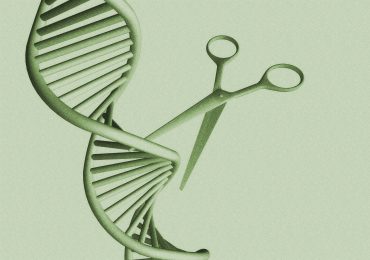2024 HALDANE PRIZE SHORTLIST: Tomonari Matsuo discusses his paper “Herbaceous species and dry forest species have more acquisitive leaf traits than woody species and wet forest species“, which has been shortlisted for Functional Ecology’s 2024 Haldane Prize for Early Career Researchers:
About the author
Having grown up in the mountainous region of Saitama, Japan, I developed a deep appreciation for nature from an early age. This passion led me to study forest ecology at Kyoto University, where I became increasingly fascinated by the dynamics of forest ecosystems. During my undergraduate and graduate studies, I had the opportunity to travel and conduct fieldwork in tropical countries, and I was immediately captivated by the structural complexity and extraordinary biodiversity of tropical forests. After completing my graduate studies, I moved to the Netherlands to pursue a PhD in tropical forest ecology, focusing primarily on naturally regenerating forests following agricultural land use. For my doctoral research, I spent approximately 1.5 years conducting fieldwork in Ghana, where I investigated the socio-ecological drivers that shape the recovery and resilience of secondary tropical forests. After completing my PhD, I expanded this research by including sites in Mexico and Australia to better understand the drivers and mechanisms of secondary tropical forest succession on a pan-tropical scale.
About the paper
Early plant scientists classified plant species into different life forms (e.g., grasses, shrubs, and trees) based on their characteristics, such as whether they are herbaceous or woody, how long they live, and how large they grow. These life form classifications help us understand how vegetation changes across landscapes, such as along a precipitation gradient from tropical savanna to tropical rainforests, and over time as vegetation regrows after a disturbance (i.e., secondary succession). However, we still know surprisingly little about how these different life forms in tropical dry and wet forests differ in leaf traits that underpin why certain plant species become abundant in specific locations and moments. In this study, we examined six main plant life forms—herbs, grasses, vines, lianas, shrubs, and trees—across young secondary forests in both dry and wet regions of Ghana. We collected leaf samples from 324 species and measured 12 key traits related to carbon, water, nutrient, and heat balance in plants. Here’s what we found:
Two major spectra in leaf traits: One is related to how quickly or slowly plants use resources (i.e., the leaf economics spectrum), and another is related to leaf size (i.e., the leaf size spectrum). These spectra provide a framework for sorting species along spatial and temporal environmental gradients based on functional traits.
Differences between life forms: Herbaceous plants had “fast” traits that helped them grow quickly in open, bright, and resource-rich conditions. In contrast, woody plants had “slow” traits that allowed them to persist in closed, shaded, and resource-limited conditions. This helps explain why herbaceous species dominate early in forest succession, but woody species take over as the forest matures.
Differences between forest types: Plants in dry forests tended to be more deciduous and had “fast” traits that help them survive heat and drought compared to those in wetter forests. This tells us how plants adapt to different climates and can inform which species to choose based on functional traits for forest restoration under specific conditions.
Trait diversity: Woody plants exhibited a wider range of leaf trait values than herbaceous ones, which may explain why they can dominate under changing microclimatic conditions throughout secondary forest succession. Meanwhile, dry forest species had a narrower range of traits, suggesting that harsh environmental conditions limit which traits (and species) can thrive there.
In conclusion, leaf traits differ greatly across life forms in tropical dry and wet forests. This helps explain 1) why there is a life form replacement from herbaceous to woody species during secondary forest succession and 2) why different plant species are abundant in different climatic conditions.
Data collection and measurements: We collected a large amount of functional trait data, and as a result, the fieldwork related to leaf sampling and measurements was quite challenging. Therefore, without the substantial support of the local community and people, we could not have completed this study. During leaf measurements, we were surprised by the incredible diversity of plant species, observing a wide range in leaf size—from the tiny leaves of Phyllanthus amarus to the gigantic leaves of Cecropia peltata.
Going forward: By linking these trait data to data from forest permanent plots, I will investigate the extent to which functional traits can explain the community assembly process during secondary tropical forest succession, and how the functional trait composition of the re-assembled community influences ecosystem functions (e.g., carbon sequestration, water infiltration, and nutrient cycling) that underpin ecosystem services (e.g., climate change mitigation, climate regulation, and soil health).
I am currently interested in plant-animal interactions, particularly those involving birds and bats for seed dispersal in the context of secondary tropical forest succession, as seed dispersal limitation is often a bottleneck in natural forest regeneration. To address this, I plan to start a new project focused on plant-animal interactions using bioacoustics. This approach will advance our scientific understanding of how such interactions shape secondary tropical forest succession and provide practical insights into where secondary tropical forests can naturally regenerate and where active intervention is needed to overcome seed dispersal limitations.
Read the full list of articles shortlisted for the 2024 Haldane Prize here.
Leave a comment






